Last updated: August 16, 2022
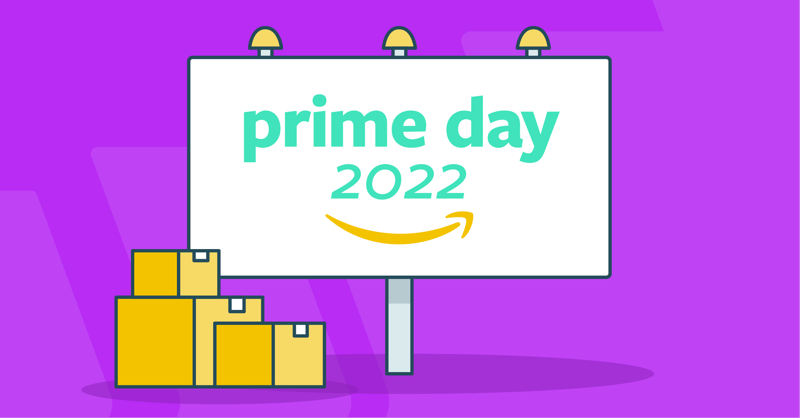
The biggest online retail holiday is back again. Sellers and shoppers know that this 48-hour event is a great way to capitalize on increased marketplace traffic and score steep deals and discounts, respectively. Prime Day 2021 saw a staggering $11B of goods sold, which translates to nearly $4M a minute.
Prime Day 2020 and 2021 experienced challenges, and this year will be no different. Sellers are feeling the effects of inflation including Amazon’s new 5% fuel surcharge, actions taken by Amazon to rid of aging FBA inventory in anticipation of Prime Day, and recent inventory limits imposed by Amazon, which have added to a feeling of uncertainty—and many brands are wondering whether or not spending and sales will be as successful as previous Prime Days.
In a survey SupplyKick conducted during our recent webinar, we found that sellers are most concerned with advertising strategies and costs this Prime Day. 48% of sellers polled noted it as their biggest concern, followed by supply chain disruptions (22%), if inflation will impact consumer spending on Prime Day (13%), tracking and measuring success (9%), and FBA inventory storage and fees (8%).
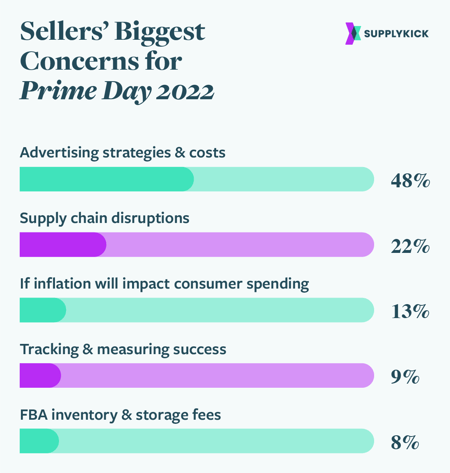
Amidst all of these hesitations from Amazon brands and sellers, only time will tell if advertising costs, supply chain, and consumer spending will continue to pose a real challenge in the coming months. Read on for the most important dates, deadlines, and strategies to implement ahead of Prime Day 2022.
Amazon is hosting a second Prime Day event this year. Their Fall Prime Event will be the official kickoff to the Q4 shopping season on Amazon. While the dates for the event are not yet set, Amazon says the 1-2 day event will take place between Sept 25-Oct. 15. Amazon says Coupon submissions close 9/9/22 and FBA inventory cut-off date for the event is 9/12/22.
Since the second Prime Day will be the start of the 2022 holiday shopping season, take a look at the data from this summer’s Prime Day as well as last year’s holiday sales/consumer behavior insights. Adjust your strategy accordingly, with an emphasis on inventory forecasting, keyword research, and advertising performance.
Think of the most recent Prime Day as a crash course as you prepare for the second one: What worked, what didn’t, and what could you have done better? Did your customers behave the way you predicted, or do you need to make some changes (to your stock, product assortment, shipping methods, marketing/branding)?Make those changes now so you don’t run into these issues again, and focus on these strategies, too.
The biggest question on many brands’ and Amazon Prime sellers’ minds right now is when is Amazon Prime Day this year? Prime Day 2022 will take place on July 12-13, 2022, which is about a month earlier than the previous year. The 48-hour event takes place for Prime members in the U.S., Canada, Mexico, U.K., and more.
Amazon officially announced this news on June 16, 2022, a little under a month before the big event, though they’ve been dropping subtle hints leading up to the date with shipping and Prime Day deal deadlines. Last year, Amazon announced Prime Day 2021 just three weeks before the big event—keeping brands, retailers, and other marketplaces (Target, Walmart) who hope to run competing promotions on their toes and scrambling to shift plans ahead of schedule. Perhaps Amazon kept it under wraps for as long as possible this year for similar reasons.
While the last two Prime Days had abnormal schedules, it looks like Prime Day is moving back to its original July timeframe this year. Amazon moved Prime Day 2020 back to October due to pandemic-related issues, and 2021 was moved to June.
Accurately forecasting for Prime Day 2022 is important, but it’s also key to keep the rest of the year in mind, too—use our Amazon 2022 FBA Calendar to stay on top of your ship-in dates.
Here are the Prime Day-specific deadlines you need to know for the US, UK, Mexico, and Canada:
Winning Prime Day customers is directly correlated with quickly forecasting the right amount of inventory to send in for Prime Day. Accurately forecasting and determining the quantity to send can be difficult, but there's nothing worse (or more frustrating) than having orders you can’t fulfill due to a lack of inventory.
Reflect on last year’s Prime Day and holiday sales, keep an eye on demand for certain products this year, and keep track of processing and stock-in times at Amazon. If you’re looking for assistance with logistics, an Amazon seller management service (ahem, SupplyKick) can help you tackle those issues.
Advertising during Prime Day is a must. Even though ads are getting more expensive, they are more necessary now than ever. Simply put, on Amazon, you pay to play. You just have to be smart about what you’re throwing your dollars at and how you're managing/optimizing Amazon Ads during this crucial time period.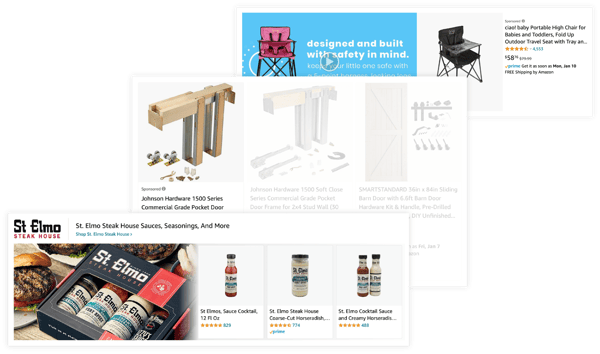 Amazon Prime Day sends a lot of traffic to the marketplace, which means you need to be prepared for higher CPCs. Prime Day is an extremely high-competition event for advertising, and spending more is the only way to make sure your ads are seen. Increasing your daily campaign budgets to 2-3 times their normal daily allocation for Prime Day is a solid strategy. Our paid advertising guide shows you how to execute an effective ads strategy and offers other tips applicable year-round.
Amazon Prime Day sends a lot of traffic to the marketplace, which means you need to be prepared for higher CPCs. Prime Day is an extremely high-competition event for advertising, and spending more is the only way to make sure your ads are seen. Increasing your daily campaign budgets to 2-3 times their normal daily allocation for Prime Day is a solid strategy. Our paid advertising guide shows you how to execute an effective ads strategy and offers other tips applicable year-round.
Ideally, you should start running Prime Day campaigns at least two weeks in advance. That allows your campaigns to earn sales history, which increases their authority within Amazon's platform, as well as allows you to optimize where and when needed. If you turn your campaigns on for the first time on Prime Day, you probably won't be successful. Keep a close eye on the performance of your Sponsored Products, Sponsored Brands, Sponsored Brands Video, Sponsored Display, and Sponsored Display Video ads leading up to, during, and after Prime Day and adjust accordingly.
Also consider driving traffic to your Amazon Store and product listings during Prime Day from Google and Facebook, influencer marketing, other sites, and even your own DTC website.
If you’re one of the many sellers who are concerned with the rising cost of advertising on Amazon during Prime Day 2022 and beyond, don’t hesitate to reach out to us for help.
Shoppers flock to Amazon Prime Day for great deals, so take advantage of the sheer volume of potential customers and update your promotions accordingly. Attract deal-seeking shoppers with Coupons and Prime Exclusive Discounts, which make your product stand out (they’re tagged on Amazon with a “Prime Day Deal” label) and increase your click-through rate during the event.
You can also explore product variations, which combine similar products varying in size or color to one listing, as well as offer product bundles, which combine complementary items that customers may want to buy together (such as a gift set or gardening tool bundle). You can give your Prime Day customers a great deal this way, while potentially generating better margins. Be sure to check Amazon’s policies on bundling to make sure your products follow their guidelines.
Note: Check the deadlines for when you need to submit your coupons and deals. (Listed above)
Highly strategic creative efforts are a great way for brands to communicate their legitimacy and value proposition, build trust with shoppers, and increase Amazon sales. SupplyKick partners have seen a 2x increase in conversion from updating their Amazon creative alone.
Shoppers who watch videos on a product listing are 3.6 times more likely to buy the product, according to Amazon experience data. Amazon has prioritized videos above photos on listings, and 100% of our webinar survey respondents stated that creating and using video content is part of, or will be part of, their Amazon strategy this year.
Creating one high-quality video will give you a step up from the competition, as watching a video is the closest thing an Amazon customer has to actually interacting with your product prior to purchase. This strategy is very effective—at SupplyKick, we’ve found that 40% of shoppers will click on a listing’s video, and of those shoppers, almost 80% will watch the whole thing. Check out our Amazon video guide to learn the types of videos and best practices for each.
In addition to implementing or refining your video strategy, double-check the A+ Content on your product listings ahead of Prime Day by:
Building trust with Amazon shoppers is vital to your success as a business. Branded product inserts can help you build trust with your customer even after they open their Prime Day purchases. Amazon package inserts allow you to:
Designing an insert with these 5 benefits in mind will provide an avenue for customers to reach out, leave a review, and potentially purchase from you again.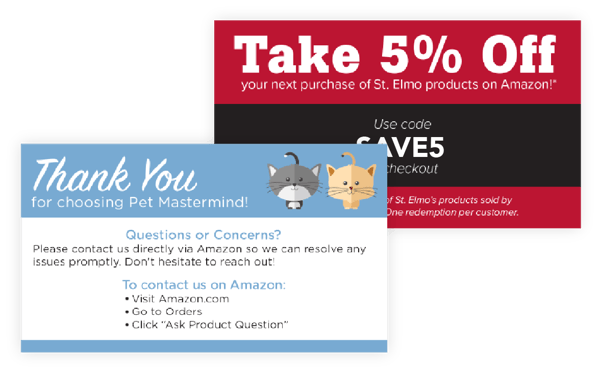 Speaking of reviews, product reviews provide unbiased and trustworthy feedback about an item to customers browsing your products on Amazon. In fact, 79% of Amazon shoppers check reviews on Amazon before buying. Product listings with positive reviews rank higher in Amazon’s organic search results, making them more likely to be found and purchased.
Speaking of reviews, product reviews provide unbiased and trustworthy feedback about an item to customers browsing your products on Amazon. In fact, 79% of Amazon shoppers check reviews on Amazon before buying. Product listings with positive reviews rank higher in Amazon’s organic search results, making them more likely to be found and purchased.
Leveraging the Amazon Vine program for new products you may be launching prior to Prime Day, and incorporating customer feedback into your listing, are the best ways to increase your review count while staying in line with Amazon’s review guidelines.
Think of your Storefront as your own website on Amazon. Though Storefronts have been around for some time now, they’ve been drastically underutilized, so you’ll be one step ahead of the competition if you create and/or optimize yours right now.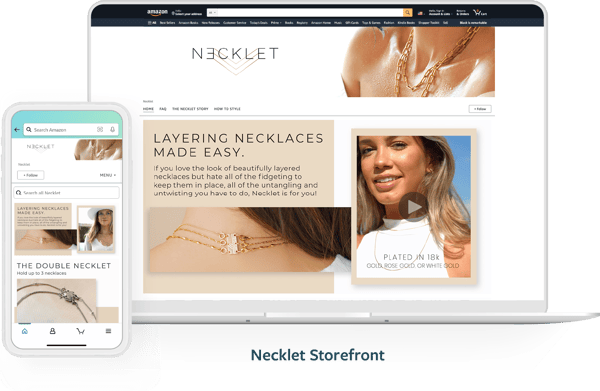 Available to brand-registered sellers, Storefronts (also referred to as Amazon Stores) can even provide behavioral insights by allowing brands to see the exact amount of traffic and sales their Storefront receives. This feature helps sellers see how customers are behaving, adapt their marketing strategy, and then execute changes that lead to higher conversion rates during Prime Day. SupplyKick partners have seen up to a 30% increase in sales per visitor from their Storefront alone.
Available to brand-registered sellers, Storefronts (also referred to as Amazon Stores) can even provide behavioral insights by allowing brands to see the exact amount of traffic and sales their Storefront receives. This feature helps sellers see how customers are behaving, adapt their marketing strategy, and then execute changes that lead to higher conversion rates during Prime Day. SupplyKick partners have seen up to a 30% increase in sales per visitor from their Storefront alone.
Brand-registered sellers should take advantage of Storefronts ahead of Prime Day (and year-round) because:
If you already have a thoughtfully designed Storefront, consider updating your current Amazon Store to showcase certain products, deals, bundles, videos, and messaging catering specifically to Prime Day crowds.
Echoing the importance of creative, today’s Amazon consumers expect authenticity and transparency. The emphasis you should be placing on your Amazon Storefront should be reflected in your listing as well—be sure to share your unique brand story and bring your company’s mission front and center through professional photography, well-written and keyword-optimized content that reflects your brand voice, and graphics that proactively answer any questions Prime shoppers may have about your products before purchasing.
This includes:
On top of basic white background photography, prioritize shooting lifestyle photos and creating graphic variations to show scale and functionality, help customers visualize themselves using your products, and clearly differentiate your brand from the competition.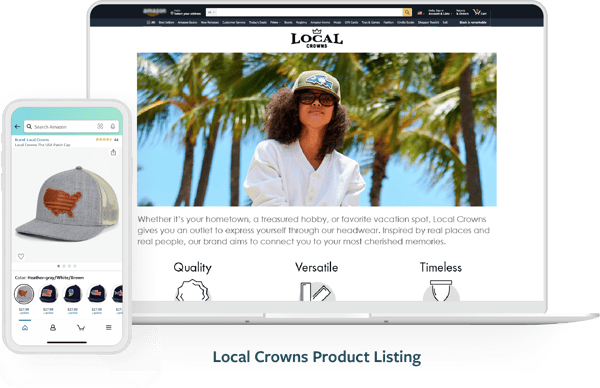 Learn more about making your listing shine with our Amazon Brand Marketing Lookbook.
Learn more about making your listing shine with our Amazon Brand Marketing Lookbook.
Trusting the data is one of the most important things you can do leading up to, during, and after Prime Day 2022. Adapting to consumer preferences is vital to preserving your brand image and success, and in the fast-paced world of Amazon selling, you have to do it quickly.
Here are some guidelines to follow:
Learning what converts customers can be tough, and so can developing a profitable Amazon advertising strategy. Finding out how to thrive on Amazon is a complex equation, and as an Amazon seller consultant, SupplyKick takes a hands-on approach to optimize your end-to-end marketplace strategy based on your specific needs and sales goals.
Not happy with your current marketplace performance? Need help with platform marketing, advertising, logistics, account management, compliance, and/or brand control? We’re here to help.
Lorem ipsum dolor sit amet, consectetur adipiscing elit


Sign up to receive our newsletter for growth strategies, important updates, inventory and policy changes, and best practices.
These Stories on Advertising
For press inquiries, please contact Molly Horstmann, mhorstmann@supplykick.com